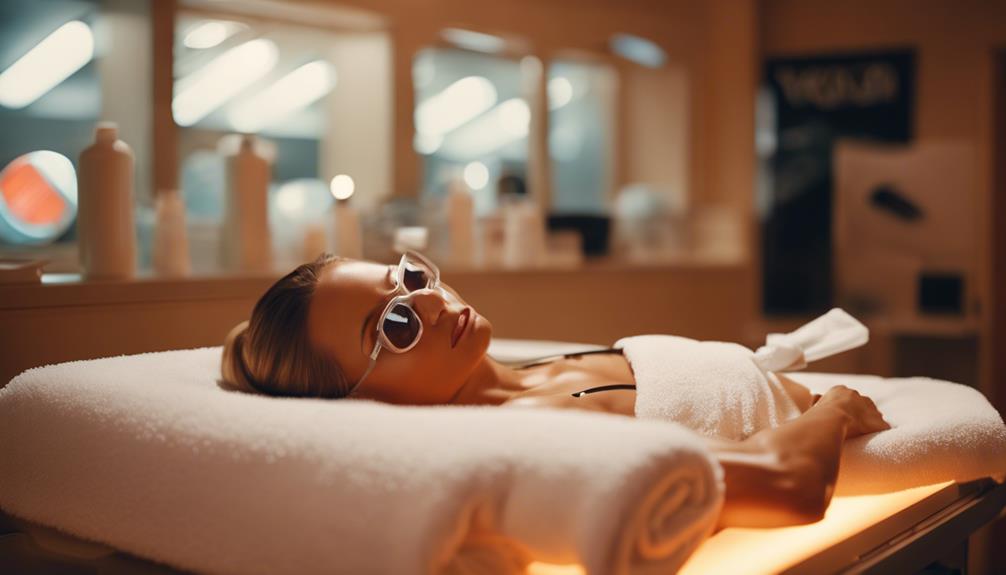Revealing the importance of maintaining tanning bed hygiene is essential. It is crucial to clean surfaces after every use to prevent skin irritations and infections. Using hospital-grade disinfectants is recommended, while avoiding harsh cleaners that may damage acrylics. Follow a detailed cleaning procedure, paying attention to high-touch areas such as controls and armrests. Allow the cleaner to sit for the appropriate amount of time and inspect for any residue afterwards to ensure readiness for the next user. Keeping a clean tanning bed will improve both comfort and safety, leading to a better tanning experience. For additional tips on tanning bed hygiene, check out this article: essential tips for tanning bed hygiene. Remember to always wear protective eyewear, change bulbs and filters regularly, and shower before and after tanning to remove any substances that can interfere with the process. Following these essential tips for tanning bed hygiene will result in a safe and effective tanning experience.
Key Takeaways
- Regularly wipe down tanning beds with hospital-grade disinfectants to eliminate germs and ensure a clean environment for users.
- Educate clients about hygiene practices and encourage shared responsibility for maintaining cleanliness in the tanning area.
- Use gentle cleaning solutions, avoiding ammonia or alcohol, to protect the acrylic surfaces of tanning beds from damage.
- Always inspect high-touch areas after cleaning to ensure no residue remains and all surfaces are sanitized.
Importance of Tanning Bed Hygiene
Maintaining proper hygiene in tanning beds is essential for your health and safety, as it helps prevent the spread of germs and skin irritations. When you use a tanning bed, you're exposed to communal surfaces that can harbor bacteria and viruses. By prioritizing hygiene, you reduce the risk of infections and skin issues, ensuring a safer tanning experience.
Additionally, clean tanning beds enhance your comfort and enjoyment during each session. You'll feel more relaxed knowing you're using a sanitized space.
Regular Maintenance Practices
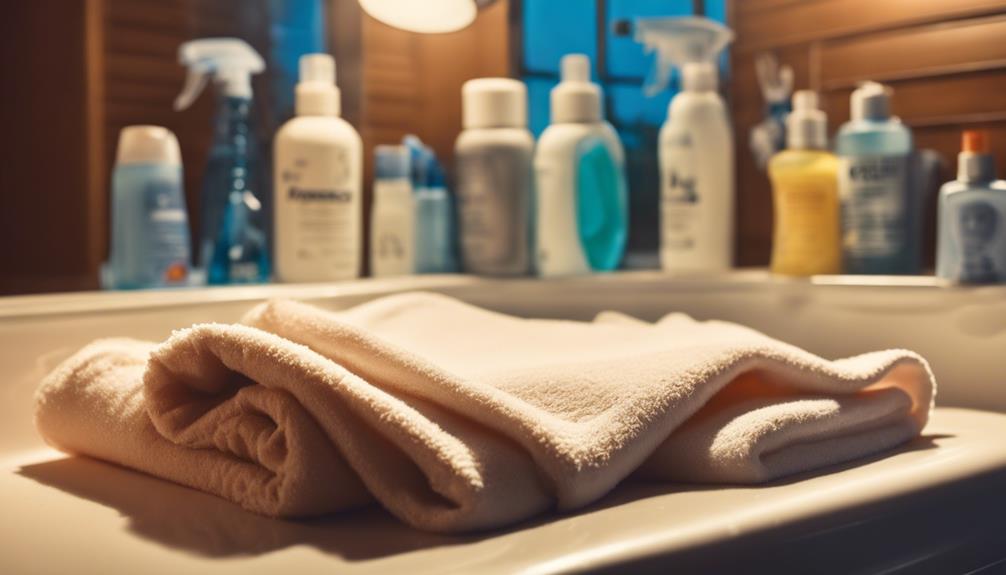
Regularly inspecting and cleaning tanning beds helps guarantee a safe and enjoyable experience for every user.
To maintain hygiene, you should implement these essential practices:
- Inspect: Check for wear and tear on acrylics and other components regularly.
- Wipe Down: After each use, clean surfaces and high-touch areas to prevent germ buildup.
Effective Cleaning Solutions
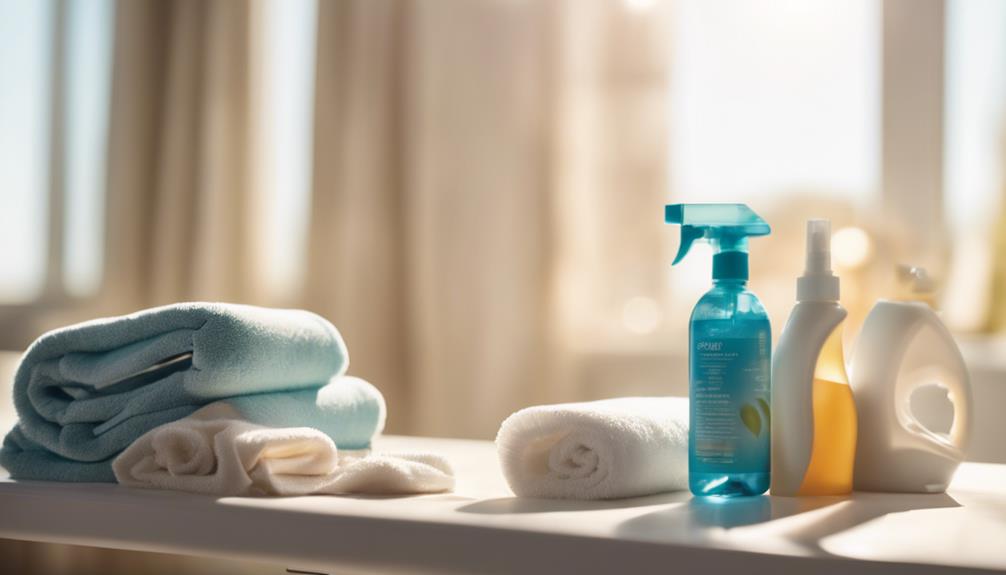
Choosing the right cleaning solutions is essential for ensuring your tanning bed remains hygienic and in great condition.
Opt for hospital-grade disinfectants that effectively kill germs without damaging acrylic surfaces. Avoid ammonia or alcohol-based cleaners, as they can cause wear and tear over time.
A simple yet effective DIY solution includes mixing distilled water and white vinegar, adding a few drops of tea tree and lemon essential oils for a fresh scent. Use a spray bottle for easy application, and always wipe the surfaces with a clean, soft cloth.
This approach not only sanitizes your bed but also protects its finish, ensuring a safe and enjoyable tanning experience for every user.
Step-by-Step Cleaning Process
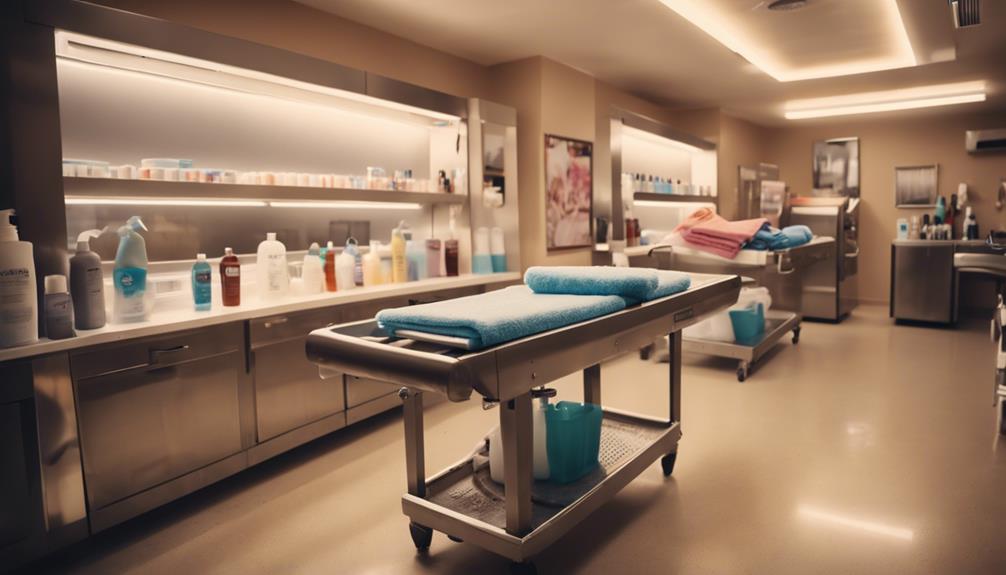
To keep your tanning bed in top shape, follow a systematic cleaning process that guarantees every surface is thoroughly sanitized and ready for use.
Start by gathering your cleaning supplies and preparing your solution. Then, follow these steps:
- Dust the Bed: Use a microfiber cloth to remove loose particles from all surfaces.
- Apply the Cleaner: Spray your chosen disinfectant generously, focusing on high-touch areas.
Common Cleaning Mistakes
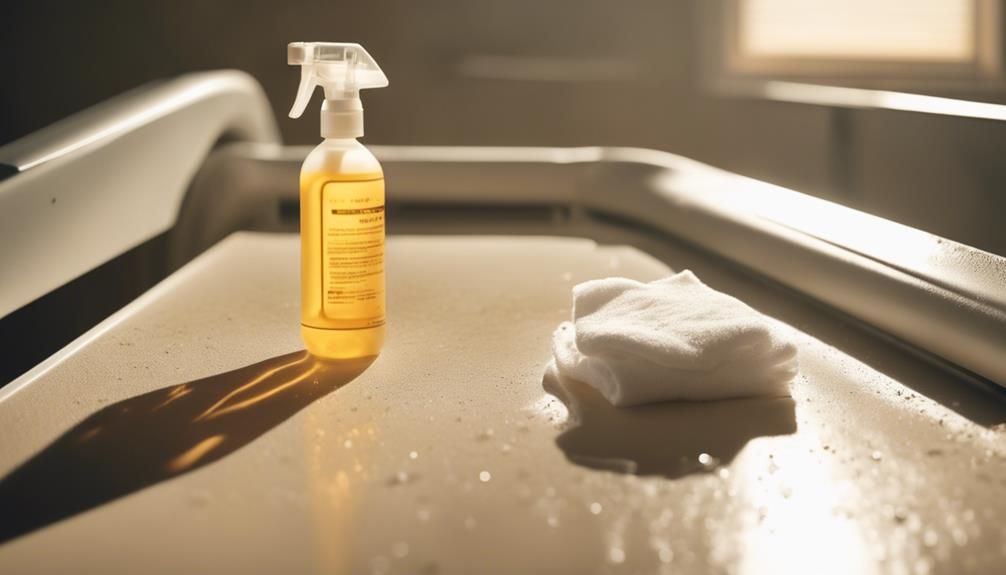
Neglecting to use the right cleaning products can lead to damage and ineffective sanitization of your tanning bed. Many people make the mistake of using abrasive cleaners or ammonia-based products, which can scratch and degrade acrylic surfaces.
Skipping high-touch areas, like armrests and controls, is another common error that leaves germs behind. You might also forget to let the disinfectant sit long enough to kill bacteria effectively.
Using dirty or rough cloths can transfer grime instead of removing it. Finally, failing to clean your tanning bed after every use not only compromises hygiene but also impacts the bed's longevity.
Avoiding these mistakes will guarantee your tanning bed remains clean, safe, and in excellent condition for every user.
Post-Cleaning Inspection Tips
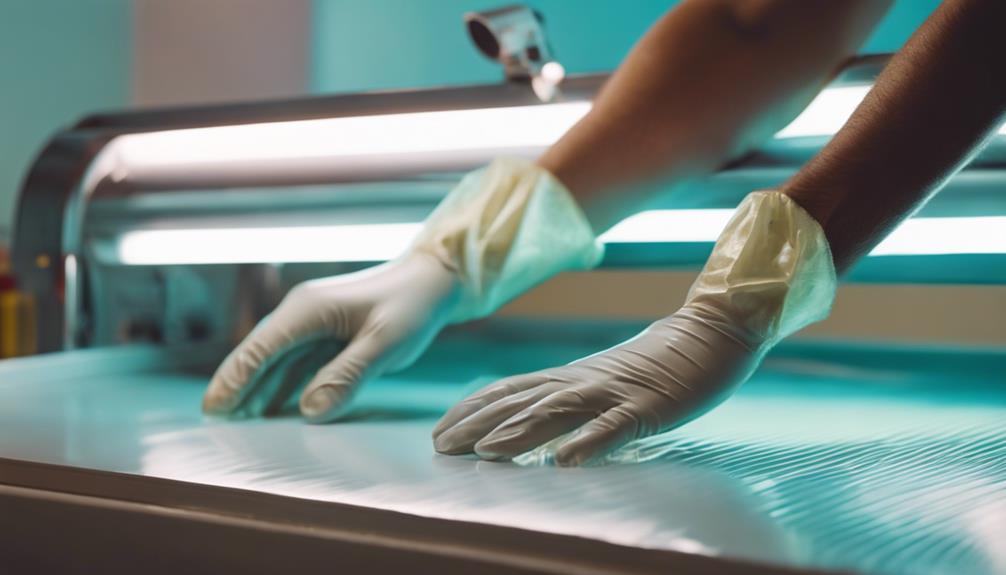
Conducting a post-cleaning inspection helps guarantee that every corner of your tanning bed is spotless and ready for the next user. This step is essential for maintaining hygiene and ensuring user satisfaction.
Here are some tips to take into account during your inspection:
- Check for Residue: Look for any leftover cleaning solution or streaks on the surfaces.
- Inspect High-Touch Areas: Pay special attention to places like the armrests, face area, and controls—these spots often need extra scrutiny.
Resources for Tanning Safety
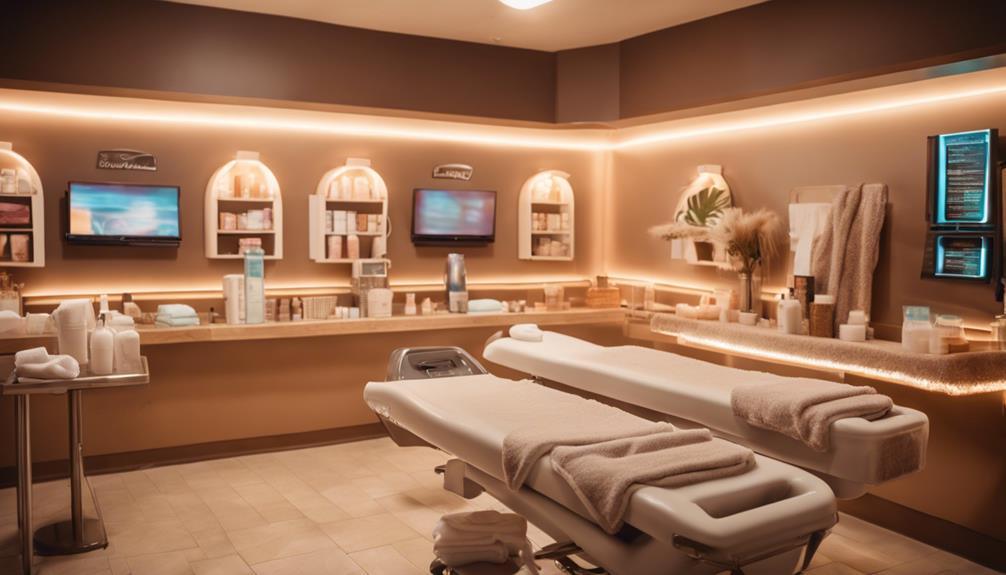
Understanding the importance of tanning safety is crucial for protecting your skin and maximizing your tanning experience.
To enhance your safety, use resources like tanning bed guidelines provided by health organizations. Familiarize yourself with the recommended exposure times based on your skin type.
Equip yourself with protective gear such as goggles and face covers to shield sensitive areas from UV rays. Always choose reputable tanning salons that prioritize hygiene and maintenance.
Don't hesitate to ask staff about their cleaning protocols and equipment safety checks. Additionally, keeping informed on the latest research regarding tanning bed risks can help you make educated decisions.
Frequently Asked Questions
How Often Should I Use a Tanning Bed for Best Results?
For best results, you should use a tanning bed 2-3 times a week, allowing at least 48 hours between sessions. Monitor your skin's response and adjust frequency based on your desired tan and skin type.
Can I Use My Own Cleaning Solutions on Tanning Beds?
Using your own cleaning solutions on tanning beds might seem harmless, but it's like inviting a tornado into your living room. Stick to recommended disinfectants to protect the beds and guarantee a safe tanning experience.
Are There Specific Tanning Bed Brands Recommended for Hygiene?
When choosing tanning bed brands, look for those known for high-quality materials and easy maintenance. Brands with user-friendly cleaning features and good customer reviews often promote better hygiene and prolong the bed's lifespan.
What Should I Do if I Notice Skin Irritation After Tanning?
If your skin's acting like a warning light after tanning, you should stop immediately. Clean the area, apply a soothing lotion, and consult a dermatologist if irritation persists. Don't ignore your skin's signals; they matter.
Can I Use Tanning Beds if I Have Sensitive Skin?
If you have sensitive skin, it's best to avoid tanning beds. They can exacerbate irritation and cause discomfort. Consider alternatives like gradual self-tanners or spray tans to achieve a sun-kissed look without the risks.
What are the Best Practices for Maintaining Hygiene in Tanning Beds?
When using tanning beds, it’s important to follow essential tanning hygiene tips to protect your skin. Always wipe down the bed with disinfectant before and after use. Wear protective eyewear to shield your eyes. Always shower before tanning to remove any lotions or makeup. These simple steps can help maintain a clean and safe tanning environment.
Conclusion
By prioritizing tanning bed hygiene, you not only enhance your tanning experience but also protect your skin from potential harm.
For example, consider Sarah, who regularly used a poorly maintained tanning bed. After developing a skin irritation, she learned the importance of cleanliness and switched to a salon with strict hygiene practices.
Now, she enjoys her sessions worry-free, achieving a beautiful tan while keeping her skin healthy.
Remember, a clean bed means a safer, more effective tanning journey!
